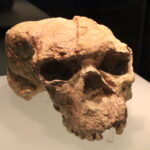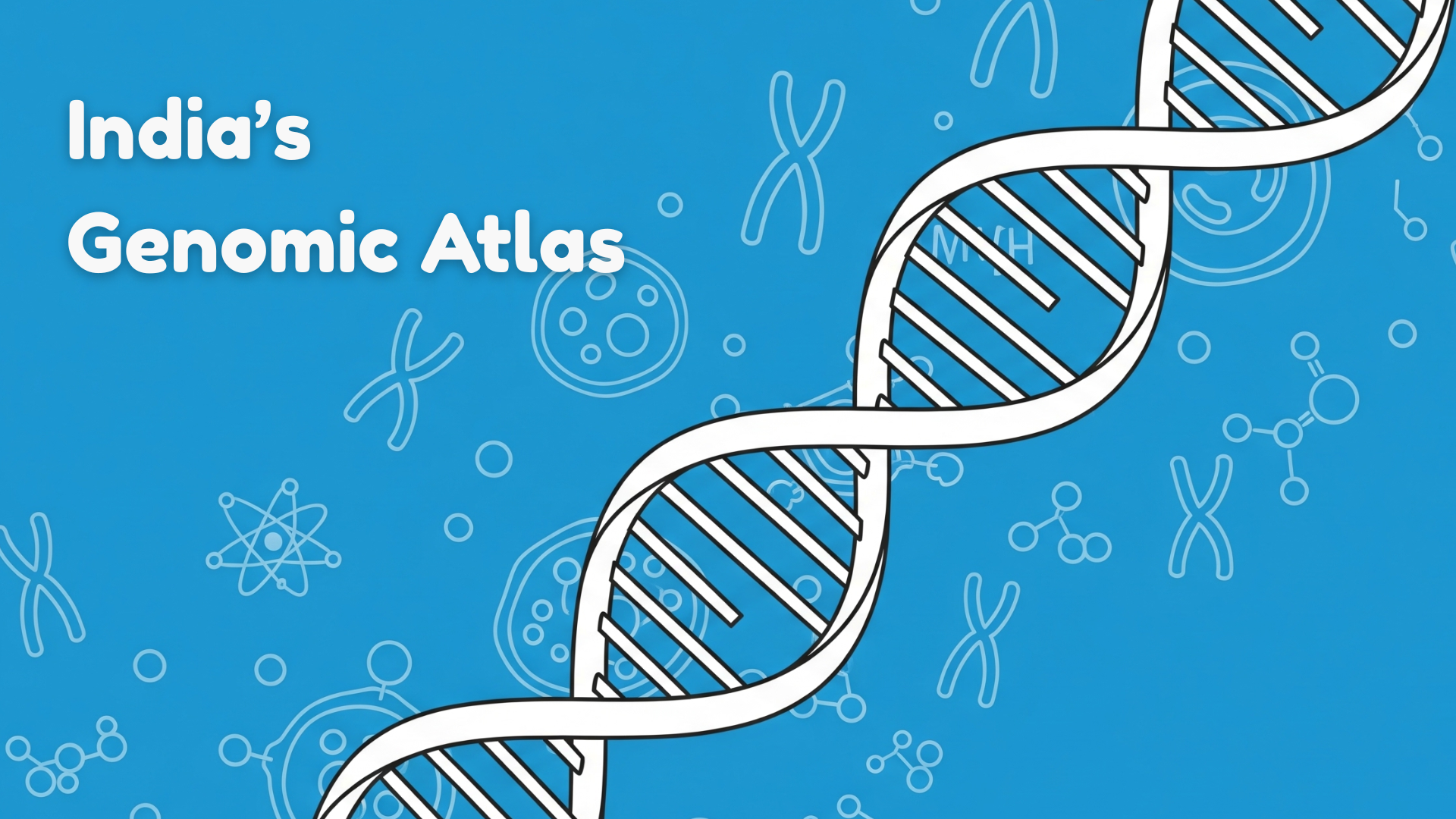In this scientific and technological age, efforts to understand the mysteries of the human body are rapidly increasing. DNA, which is Deoxyribonucleic Acid, in our body — and which carries genetic information — is today not only a means of identification but also a way to understand our health, history, and the structure of society.
India, our country, has recently developed a Genomic Atlas of its population. This is a big map that provides information about the genes of various communities, castes, and people from different regions of India. In this text, we will explore what a genome is, what a genomic atlas is, and why these are important to us.
What is a Genome?
The genome is the complete set of information inside our body that determines who we are — the color of our hair, the color of our eyes, the strength of our bones, and even the diseases we may be more vulnerable to. Think of it as a huge and complex book written with billions of characters (bases), containing the instructions for building and running the human body.
A base is a small part of DNA that acts like a letter in the body’s instruction book. Our body has about 3 billion DNA bases. These bases are of four types: A (adenine), T (thymine), C (cytosine), and G (guanine). They combine in a specific order, which forms the foundation of our lives. This order is slightly different in each person, so we all look different and have unique physical traits.
We inherit DNA from our parents. That means one part of DNA from our father and one from our mother combine in us to form our unique identity. It’s like a special code for our life, which connects us to our ancestors and shapes our features.
You may think that the genome only determines our physical traits, but it is more than that. The genome also tells us which diseases we are more vulnerable to and which parts of our body are more active or weak. So, it is also important for us to understand this so that we can take better care of our health.
What is a Genomic Atlas?
Now let’s talk about the genomic atlas. First, look at the physical map of India below:

You can see how different areas, rivers, mountains, and cities are represented on this physical map of India. It shows which mountains are located in which parts of India, where the rivers flow, and where the cities are situated.
A genomic atlas is like a map, but instead of showing land, it displays the patterns of genes present inside our bodies and the changes occurring in them. Just as a physical map shows the land structure of India, a genomic atlas is a digital map of the gene variations among the people of India.
In a vast and diverse country like India, people from every region and community have small variations in their genes. Some variations help us fight a particular disease, while others make us more vulnerable to it. A genomic atlas is a collection of these variations, which scientists compile by sequencing the DNA of thousands of people.
With the help of this atlas, scientists are able to understand which communities or regions are more susceptible to certain diseases. For example, if diabetes or heart disease is more common in a particular area, the genomic atlas can show which gene variations may be responsible for it.
This atlas is not just about diseases; it also shows the diversity of our genes – how unique and complex our country or region is. It is a scientific treasure that not only helps to understand diseases, but also our history, culture, and ancestry.
India’s unique genomic diversity
India is one of the most diverse countries in the world. It has over 4,600 ethnic groups, 22 official languages, and many cultural traditions. This rich social and geographical diversity is also clearly seen in our genome.
As we know, in different communities of India, marriage has often taken place within the same group (endogamy), which makes the genomic patterns stable and distinct. Additionally, historical migrations, geography, and social customs have made India’s genomic map even more complex.
Recently, scientists studied the genomes of 2,762 people and found more than 26 million genomic variants, highlighting the diversity of India.. This data shows that there is huge potential for genomic research in India, and it can revolutionise our health sector. Source: ScienceDaily
Why is the Genomic Atlas of India important?
Now, after having a brief understanding of the genomic atlas, let’s look at what its uses are and why it is important.
(a) Revolution in the health and medical sector
The genomic atlas builds the foundation of Precision Medicine. This means doctors can treat patients’ diseases based on their genes, making treatments more effective and personalized. For example, diabetes and heart disease are more common in some groups. If doctors know that your genes put you at higher risk for these diseases, they can take preventive measures in time.
(b) Understanding of Indian history and genealogy
With genomic data, we can also trace where our ancestors came from and how they gradually spread across different regions. This helps us understand our history better and also provides clues about how different Indian groups and languages evolved over time.
(c) Social and ethical aspects
Genomic information also has a social impact, especially in a country like India, where challenges like the caste system still exist. It’s important to ensure that genomic data is not misused to promote discrimination.
Genomic data: challenges and ethical questions
As the use of genomic data is increasing, questions about its security and ethics are being raised. This data is extremely personal, so caution is necessary in its use.
- Data security: How will our personal genomic information be kept safe?
- Consent: Has proper permission been taken from people before collecting their data?
- Risk of Misuse: Can this data be used to promote caste-based or social discrimination?
- Transparency: How will the research findings be shared so that society benefits from them?
Finding answers to these questions is very important, and it requires careful attention and responsible action from both scientists and policymakers to ensure that genomic data is used safely, ethically, and for the public good.
Conclusion
India’s genomic atlas is a proud achievement – not only for scientists but for all of us. It marks a crucial step toward understanding the hidden mysteries within our genes, helping us improve our health, treatments, and quality of life.
More importantly, this project reminds us to respect our diversity and shows how science and society can move forward together, hand in hand.
Similar posts

Can’t Explain







